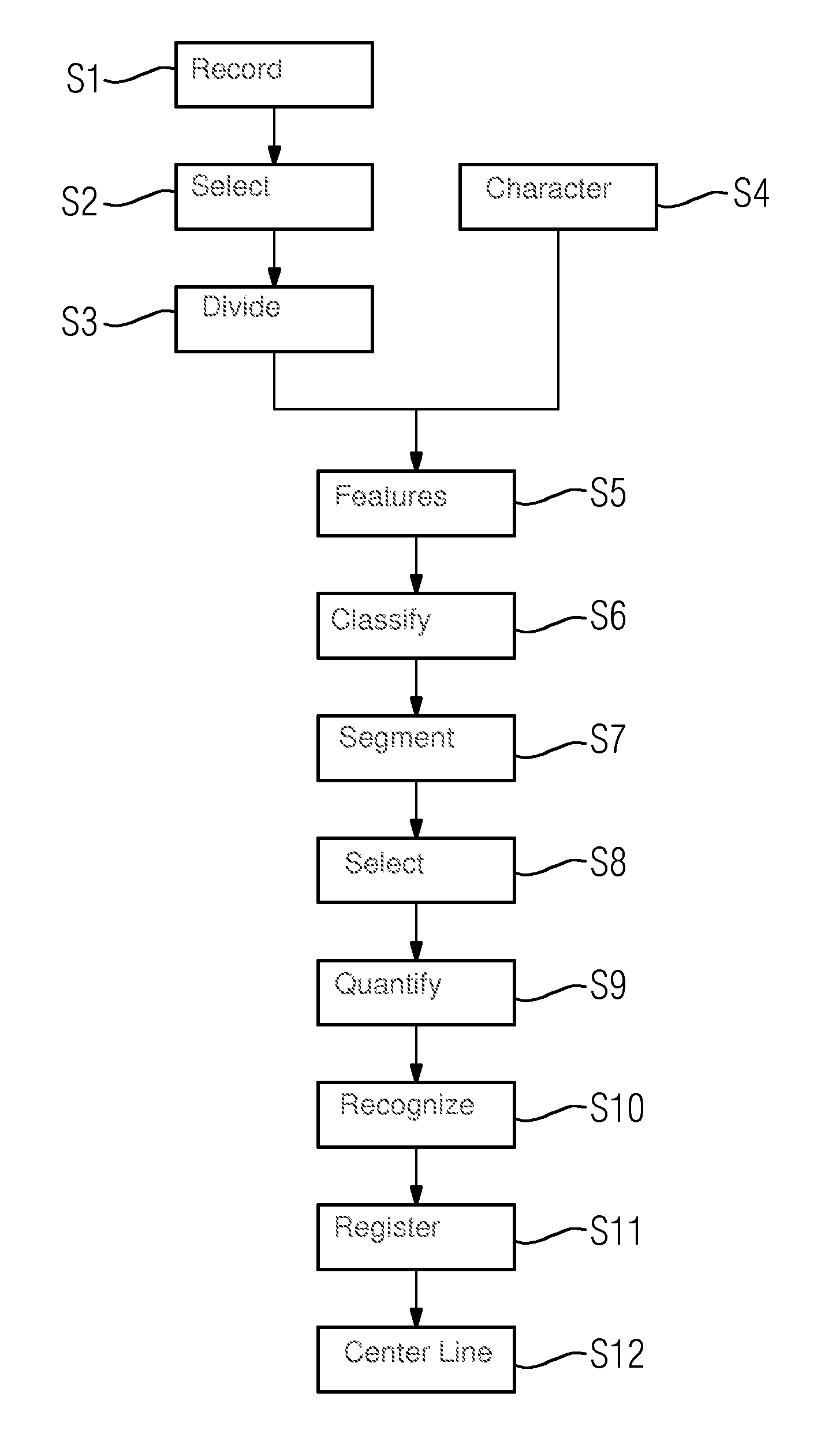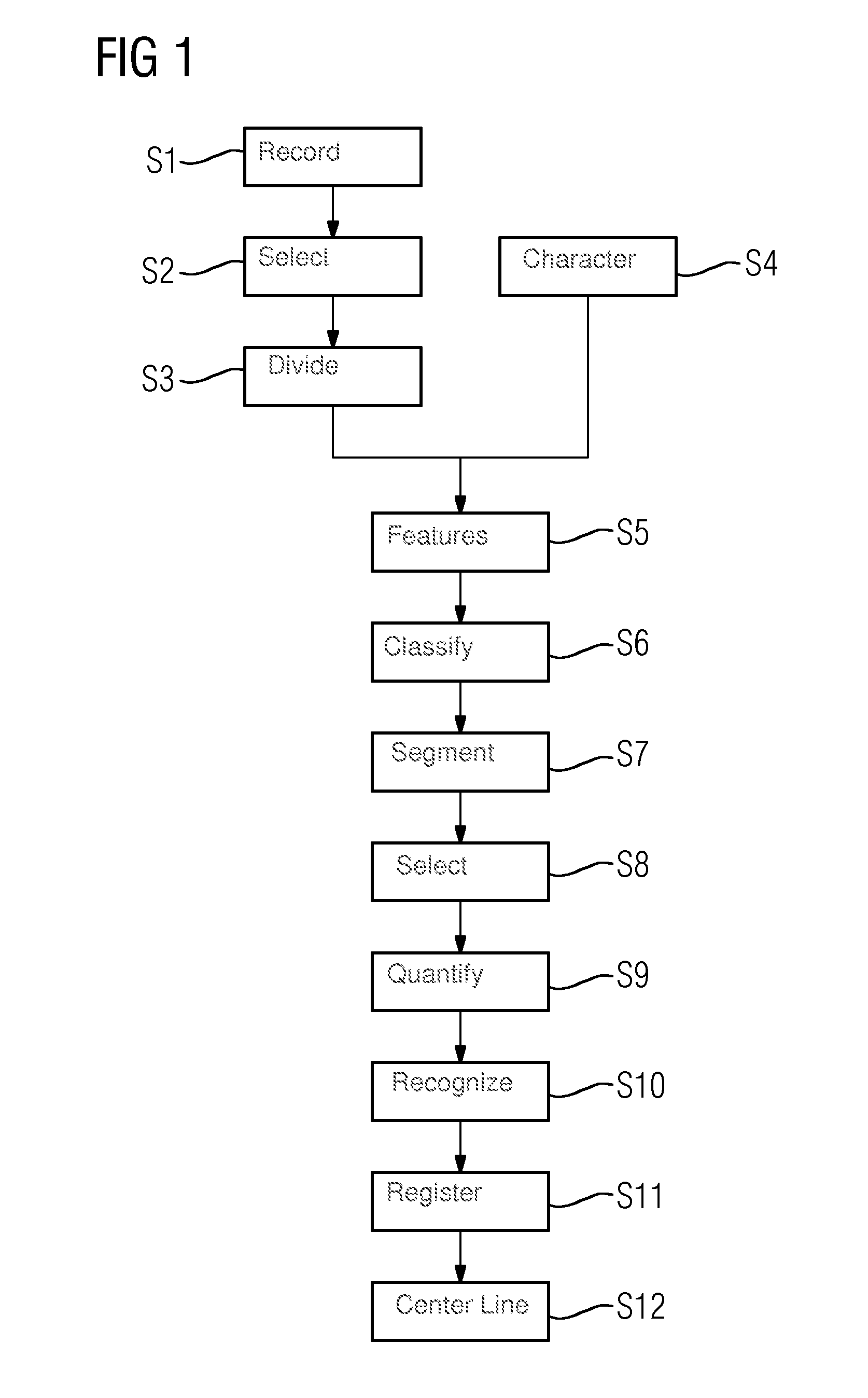Determining a Three-dimensional Model Dataset of a Blood Vessel System with at least One Vessel Segment
a blood vessel system and three-dimensional model technology, applied in image data processing, diagnostics, applications, etc., can solve the problems of manual segmentation of projection images, difficult recording of blood vessel images, and relatively complex specification of the approximate vessel center line of a relevant vessel. achieve the effect of simple and reliable registration of projection images
- Summary
- Abstract
- Description
- Claims
- Application Information
AI Technical Summary
Benefits of technology
Problems solved by technology
Method used
Image
Examples
Embodiment Construction
[0049]FIG. 1 shows an exemplary embodiment of the method for determining a three-dimensional model dataset of a blood vessel system of a patient including at least one vessel segment. In act S1, as a preparatory act, a number of projection images of a blood vessel system of a patient are recorded from different recording angles with an imaging detection device, namely an x-ray device with a C-arm. In particular, a contrast medium is used during the recording of the blood vessel system. The recording angles of the projection images are selected such that an angular range of at least 30° is covered by the projection images. The recording is triggered by a synchronization of the recordings with an EKG signal such that all recordings occur in the same heart phase, especially during the end systole or the end diastole. A heart phase is selected in which a small movement in the blood vessel system, even in the area adjacent to the heart, is to be expected.
[0050]In act S2 the projection im...
PUM
 Login to View More
Login to View More Abstract
Description
Claims
Application Information
 Login to View More
Login to View More - R&D
- Intellectual Property
- Life Sciences
- Materials
- Tech Scout
- Unparalleled Data Quality
- Higher Quality Content
- 60% Fewer Hallucinations
Browse by: Latest US Patents, China's latest patents, Technical Efficacy Thesaurus, Application Domain, Technology Topic, Popular Technical Reports.
© 2025 PatSnap. All rights reserved.Legal|Privacy policy|Modern Slavery Act Transparency Statement|Sitemap|About US| Contact US: help@patsnap.com



